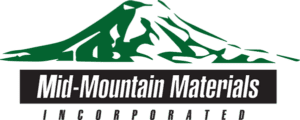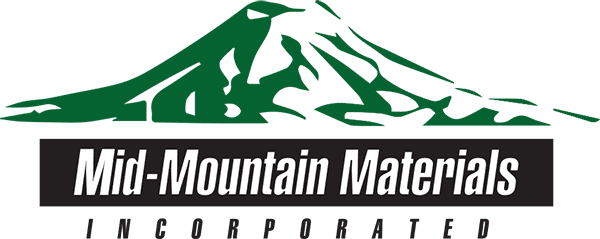Harsh manufacturing environments can be unforgiving, especially for industrial robots working in smelting lines, paint booths, or casting cells. These machines operate amid continuous exposure to heat, airborne particulates, and corrosive chemicals, which can accelerate wear on their internal systems. Without effective protection, robotic performance falters and critical components deteriorate. Maintaining thermal stability and a clean internal environment is key to keeping such systems running reliably. Robot covers with ducting ports provide active thermal management and airflow control within the protective enclosure, producing the stable operating conditions that industrial robots depend on when exposed to extreme heat or airborne contaminants.
What Are Robot Covers with Ducting Ports?
Shielding robotic systems operating in harsh industrial settings requires the use of custom-engineered fabric enclosures, commonly referred to as robot covers. Featuring integrated air intake and exhaust ports, the covers connect to external ventilation systems to enable active airflow and cooling. Stabilizing internal temperature and air quality not only improves operational reliability but also extends the life of key components. For robots working in heat-intensive or contaminant-rich environments, robot covers with ducting ports offer a reliable layer of protection that helps preserve system performance and extend component life.
Thermal Management
What Is Thermal Management in Robotics?
Thermal management in robotics is all about keeping critical components like motors, sensors, and control electronics operating within safe temperature ranges. Whether the heat comes from the robot’s own activity or its environment, too much of it can reduce performance, damage electronics, or shorten equipment lifespan.
Risks of Inadequate Thermal Control
In the absence of proper cooling, the internal temperatures of robotic systems may exceed safe operating limits. This can cause:
- Overheated motors and reduced torque output
- Sensor drift or complete failure
- Wiring insulation to degrade prematurely.
The aforementioned failures are not only costly but can disrupt workflows and compromise safety in automated lines.
How Robot Covers with Ducting Ports Enable Thermal Management
Robot covers with ducting ports incorporate forced air systems directly into the enclosure, introducing cool air through dedicated ports aimed at heat-prone components like joints and motors. Internal airflow paths then distribute this cooling air across the enclosure, maximizing heat transfer and preventing the formation of hot spots. The warm air is then extracted through separate exhaust ports, which helps preserve thermal stability and prevents recirculation. Some covers also include multiple ports for zoned cooling, targeting specific components with precision. Together, the features of robot covers with ducting ports help robots stay efficient and dependable, even when operating in high-heat environments or under continuous workload stress.
Where Thermal Management Matters Most
Common applications for robot covers with ducting ports include:
- Welding cells: Addressing heat buildup from arcs and radiant energy.
- Foundries and casting lines: Shielding robots from ambient furnace heat.
- Laser cutting or sintering operations: Managing internal and reflected heat that threatens sensitive electronics.
Airflow
What Is Airflow in Robotics?
Airflow in robotics refers to the continuous movement of air within protective enclosures. It prevents the accumulation of heat, dust, and vapors on sensitive parts, maintaining a fresh and balanced internal atmosphere. Consistent airflow circulation supports stable operating conditions, reduces wear, and helps robots perform reliably over time. To enable effective airflow, robot covers with ducting ports direct air precisely where it’s needed, ensuring optimal environmental control inside the enclosure.
Risks of Poor Airflow
Insufficient airflow in robotic enclosures can cause cumulative damage with long-term operational impacts. If air circulation is lacking or uneven, contaminants and unstable conditions become more likely, leading to:
- The accumulation of dust and vapors on motors, joints, and sensors, producing contaminant build-up.
- Surface damage and material wear from exposure to airborne particles, raising the risk of corrosion and abrasion.
- Temperature fluctuations that accelerate lubricant deterioration and reduce its effectiveness.
Such airflow issues can gradually impact reliability and affect the long-term durability of robotic systems.
How Robot Covers with Ducting Ports Manage Airflow
Sustaining consistent airflow within an enclosure is essential for preserving the performance of sensitive robotic components. Robot covers equipped with ducting ports produce defined pathways for air to move across joints, motors, and electronic systems, helping to sweep away dust and vapors before they can settle. Designed to interface with external ventilation systems, robot covers with ducting ports keep airflow continuous and targeted. By delivering effective airflow management, these covers support cleaner operating conditions and reduce the risks associated with particulate build-up.
Where Airflow Matters Most
Proper airflow is crucial in settings where even minor contaminants can disrupt production or compromise quality. Robot covers with ducting ports ensure air moves effectively to protect sensitive processes in:
- Food and beverage: Keeping processing areas clean by preventing stagnant air and reducing microbial risks.
- Electronics manufacturing: Reducing particulate exposure to safeguard delicate components and maintain assembly precision.
- Pharmaceutical packaging: Providing a controlled atmosphere to comply with strict hygiene and quality standards.
Elevating Robot Protection with THERMOPAK® Robot Covers and Robot Protective Systems
Mid-Mountain Materials, Inc.’s THERMOPAK® Robot Covers and Robot Protective Systems are engineered to provide robust protection for robotic systems operating in challenging industrial environments. Built with durable materials and precise design, the covers help shield robotics from harsh conditions and extend equipment life. If you are interested in learning about how our THERMOPAK® Robot Covers can enhance your robotics operations, contact our team for expert support and guidance.

